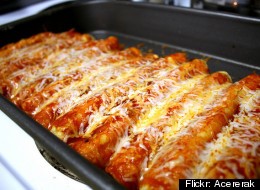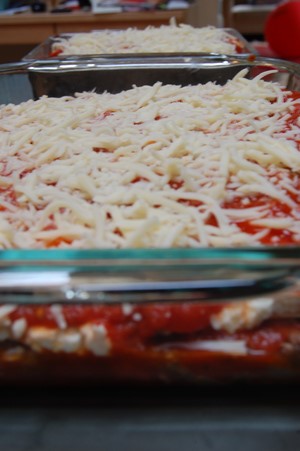6 Mistakes You're Making Reheating That Food
The 6 Mistakes You're Making Reheating That Food

Leftovers can be a boon -- two homemade meals for the effort of one. Or, if improperly handled, leftovers can be sad and unappealing. Some minor adjustment to your methods will pay off, turning that foil covered dish into treasure.
1. Don't Forget the Water
It is the rare food which can be successfully reheated without a sprinkle of water -- especially in the microwave. Most foods, including pastas, rice,
grains and root vegetables, absorb surface liquids as they cool in your refrigerator. Replace that water by dripping, drizzling or flicking water onto the
surface of any of the above before you reheat them. If you skip this step, the steam that the oven creates will be drawn off the surface of your food,
leaving it rubbery and stiff.
2. Where's the Lid?
Do those leftovers taste dry? In the first place, tightly wrap food in the refrigerator, because it is always easier to take moisture out of a reheated
food than to put moisture back in. Then, if you're reheating in a conventional or toaster oven, you will probably want to cover the food for the first half
of the reheat time. This allows the oven to warm up the ceramic or metal dish which holds the food. Once that comes to temperature, you can remove the
cover and allow the food to heat evenly.
3. Don't Walk Away From That Microwave
Reheating tasty leftovers takes a bit more babysitting than you'd think. In spite of what the manufacturer tells you, microwaving is a contact sport. Go
ahead and set the timer for three minutes, but after sixty seconds you should open the door, carefully remove the lid or covering, and stir. Microwaves
heat quickly but wildly unevenly. Without a stir, you will have cold spots as well as overcooked sections. Even soup needs a stir during reheating.
4. Don't use the Microwave for Foods with Multiple Moisture Profiles
The microwave is a quick and useful appliance, but it should only be used on foods which are consistently moist: pasta dishes, rice, steamed vegetables,
soups & chilis. Anything which should be crisp on the outside and moist within (bread, fried chicken) should be warmed in the oven or toaster oven.
Microwave technology turns crisp food soggy or rubbery. There's no getting around it.
5. Try Your Broiler
Even if broiling is not a comfortable part of your cooking repertoire, it can be invaluable for perking up leftovers. Foods that get soggy in the
microwave, such as breads, pizzas or anything breaded or fried, can be crisped up under the broiler. If you are looking at a plate which is warm but
unappetizing, try a minute underneath the preheated broiler. Keep food at least six inches from the coils and watch constantly for burning.

6. Don't Forget the Topping
Add something fresh to the plate. Try one of these: a squirt of lemon juice, a sprinkle of grated pecorino, a dot of sour cream, a spoonful of salsa,
shredded cheddar, panko breadcrumbs, a dollop of BBQ sauce, minced parsley or windowsill chives. You'll be surprised how far a garnish or sprinkle can go
toward taking leftovers from sad to righteous.
7. Shred, Don't Cut
Cold chicken or slow-cooked meats should be shredded by hand rather than cut with a knife. The meat will cleave along lines which naturally preserve a
moist texture.
8. Chill Immediately, Use Quickly and Reheat Thoroughly
Leftovers are a boon, but only if you use them safely. Don't allow foods to sit around the kitchen for hours before you chill them. When reusing, heat
thoroughly. Not sure if that lasagna is hot? Stick the tines of a fork into the center of the heated dish and hold for a five count. Then touch to your
tongue. Reheated food should be hot, not just lukewarm.
